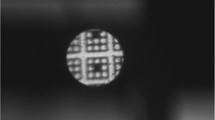Abstract
Coordinate Alignment (CA) is an important problem in hybrid tracking systems involving two or more tracking devices. CA typically associates the measurements from two or more tracking systems with respect to distinct base frames and makes them comparable in the same aligned coordinate system. In this article, we discuss a sub-problem, Paired-Orientation Alignment (POA), in the category of CA. This sub-problem occurs during the development of an integrated electromagnetic and inertial attitude (orientation) tracking system, where only the orientation information is acquired from the two tracking devices. The problem is modeled as a matrix equation YC = D with constraints, which can be solved as a least-squares problem using quaternions. A closed-form analytical solution is given by the pseudo-inverse matrix. This method is specifically for registering the paired-orientation measurements between two coordinate systems, without using position information. The algorithm is illustrated by simulations and proof-of-concept tracking experiments.
Similar content being viewed by others
References
Fassi, I., Legnani, G.: Hand to sensor calibration: a geometrical interpretation of the matrix equation ax = xb. J. Robot. Syst. 22(9), 497–506 (2005). doi:10.1002/rob.20082
Fitzpatrick, J., West, J., Maurer, J.C.R.: Predicting error in rigid-body point-based registration. IEEE Trans. Med. Imag. 17(5), 694–702 (1998). doi:10.1109/42.736021
Kapoor, A., Deguet, A., Kazanzides, P.: Software components and frameworks for medical robot control. In: IEEE Intl. Conf. on Robotics and Automation (ICRA), pp. 3813–3818 (2006). doi:10.1109/ROBOT.2006.1642285
Kuipers, J.B.: Quaternions and Rotation Sequences: a Primer with Applications to Orbits, Aerospace, and Virtual Reality. Princeton University Press (2002)
Park, F., Martin, B.: Robot sensor calibration: solving AX = XB on the Euclidean group. IEEE Trans. Robot. Autom. 10(5), 717–721 (1994). doi:10.1109/70.326576
Peters, T., Cleary, K.: Image-Guided Interventions: Technology and Applications. Springer (2008)
Ren, H., Kazanzides, P.: Hybrid attitude estimation for laparoscopic surgical tools: a preliminary study. In: IEEE Intl. Conf. on EMBS, pp. 5583–5586 (2009)
Tsai, R., Lenz, R.: A new technique for fully autonomous and efficient 3D robotics hand/eye calibration. IEEE Trans. Robot. Autom. 5(3), 345–358 (1989). doi:10.1109/70.34770
Zitová, B., Flusser, J.: Image registration methods: a survey. Image Vis. Comput. 21(11), 977–1000 (2003). doi:10.1016/S0262-8856(03)00137-9. URL:http://www.sciencedirect.com/science/article/B6V09-49D25S6-3/2/b95e1823beee3564404b565b95dc8770
Author information
Authors and Affiliations
Corresponding author
Rights and permissions
About this article
Cite this article
Ren, H., Kazanzides, P. A Paired-Orientation Alignment Problem in a Hybrid Tracking System for Computer Assisted Surgery. J Intell Robot Syst 63, 151–161 (2011). https://doi.org/10.1007/s10846-010-9475-y
Received:
Accepted:
Published:
Issue Date:
DOI: https://doi.org/10.1007/s10846-010-9475-y




